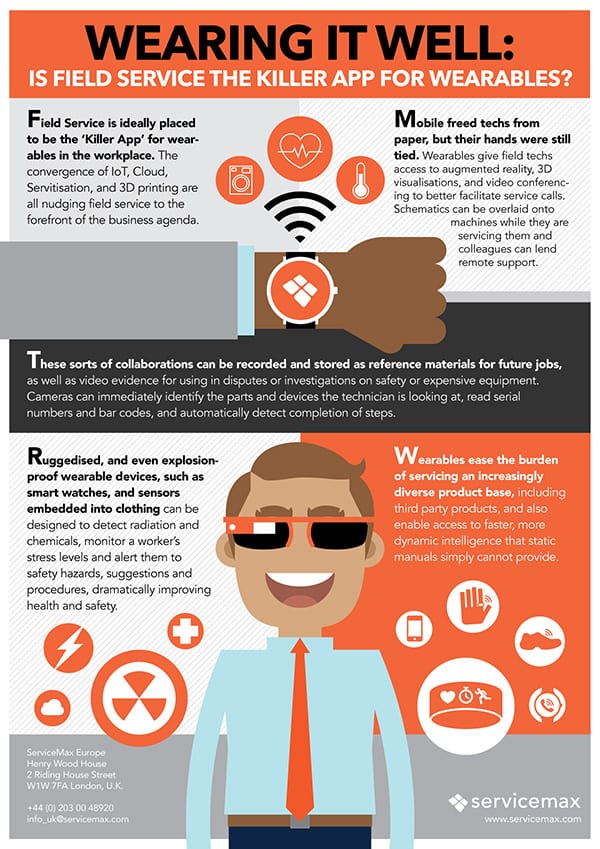Until just a few years ago, innovation in the Field Service industry was inching forward at a snail’s pace with manual processes and paperwork. While field-ready mobile platforms has freed techs from paper, their hands were still tied. If a field worker needs how-to instructions about a specific piece of equipment, can’t remember every step of a procedure, or needs to seek guidance from a colleague, he or she must literally put down their tools and stop what they’re doing while they log on, look up the information required on their smartphone, tablet or PC or make a phone call to someone who can advise them. This slows progress for both the technician and the customer in an industry where time is money.
In light of Salesforce’s recent Apple Watch announcement, wearable technology is again in the news. We are interested because ServiceMax believes wearables have the ability to empower field service workers to work seamlessly onsite with access to all of the data, insight and information they require. The equipment that technicians are being tasked with servicing is becoming increasingly complex, and companies are diversifying to repair and maintain a variety of products – including third-party products, requiring a wider range of skills. In this context, wearables can not only ease the burden of servicing an increasingly diverse product base, but also enable access to faster, more dynamic intelligence that static manuals simply cannot provide.
IDC estimates the global market for wearables will “swell to 111.9 million units in 2018, resulting in a CAGR of 78.4%”. We are still a ways off from seeing wearables used to their full potential, but the field service industry will be both one of the biggest trail blazers and one of the biggest beneficiaries in this market. With Gartner predicting that companies in field service could increase their profits by up to $1 billion annually through greater efficiency and cost effectiveness, it’s not a question of if, but rather of when.



Share this: